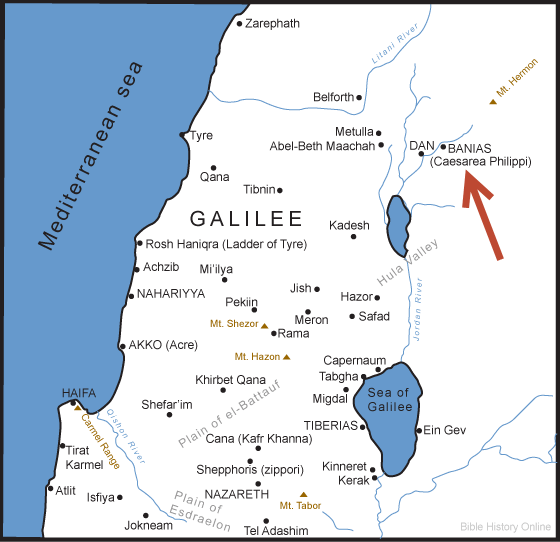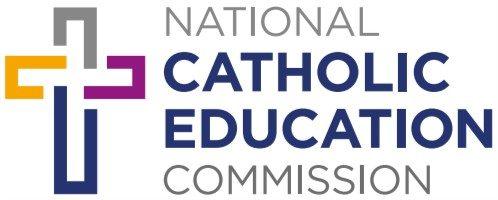Jesus’ Declaration about Peter
27 Jesus went on with his disciples to the villages of Caesarea Philippi; and on the way he asked his disciples, “Who do people say that I am?” 28 And they answered him, “John the Baptist; and others, Elijah; and still others, one of the prophets.” 29 He asked them, “But who do you say that I am?” Peter answered him, “You are the Messiah.”[a] 30 And he sternly ordered them not to tell anyone about him.
New Revised Standard Version Bible: Catholic Edition, copyright © 1989, 1993 the Division of Christian Education of the National Council of the Churches of Christ in the United States of America. Used by permission. All rights reserved.
What to do with this educator’s commentary
This commentary invites you as a teacher to engage with and interpret the passage. Allow the text to speak first. The commentary suggests that you ask yourself various questions that will aid your interpretation. They will help you answer for yourself the question in the last words of the text: ‘what does this mean?’
This educator’s commentary is not a ‘finished package’. It is for your engagement with the text. You then go on to plan how you enable your students to work with the text.
Both you and your students are the agents of interpretation. The ‘Worlds of the Text’ offer a structure, a conversation between the worlds of the author and the setting of the text; the world of the text; and the world of reader. In your personal reflection and in your teaching all three worlds should be integrated as they rely on each other.
In your teaching you are encouraged to ask your students to engage with the text in a dialogical way, to explore and interpret it, to share their own interpretation and to listen to that of others before they engage with the way the text might relate to a topic or unit of work being studied.
Structure of the commentary:
See the general introduction to Mark.
This material focuses on the world at the time of the text
Text & textual features
Characters & setting
Ideas / phrases / concepts
Questions for the teacher
The world in front of the text
Questions for the teacher
Meaning for today / challenges
Church interpretations & usage
The World Behind the Text
See general introduction to Mark.
The World of the Text
Texts & Textual Features
This passage contains a discourse between Jesus and his closest disciples. This is a pivotal and climactic passage for the Gospel of Mark, almost at the exact mid-point of the book. provides a shift in the story, bridging between his earlier successful activity in Galilee and the beginning of rejection and his journey to Jerusalem and crucifixion.
Characters & Setting
This passage involves a small group of people, Jesus, and his disciples. The discourse takes place as they travel in the opposite direction to Jerusalem, at the northern limit of what had traditionally been Israel. In Jesus’ time, it was not part of Roman Palestine.
The number of disciples is not given, and the only one named is Peter who plays a key role.
Leading up to this, Jesus is shown as continually travelling. He had previously been to the region of Tyre on the Mediterranean coast north of Galilee, then to the east of the Sea of Galilee back to the west side and then to the east, before going to Bethsaida and onwards north towards Caesarea Philippi. Caesarea Philippi was an important Roman town approximately 40 kms north of the Sea of Galilee. It was built near the place where springs fed the Jordan River with temples to the Roman god Pan and previously the Canaanite god Baal. It is not clear if they entered Caesarea Philippi.

The passage follows 8:17-21 in which Jesus rebukes them for their lack of understanding, asking ‘Do you have eyes, and fail to see?’ and then the healing of a blind man (8:22-26). Jesus then asks them who they now say he is and Peter responds with a new insights, that ‘You are the Messiah.”
Ideas/ phrases/ concepts:
The question Jesus asks of the disciples, “Who do you say that I am?” is significant for Mark. It is the turning point in the Gospel’s narrative, and throughout the book, the disciples continue to misunderstand who Jesus is. The only characters in the Gospel who recognise him as Son of God are demons and a Roman centurion.
Jesus needs them to understand who he is before he goes to Jerusalem, however the first response they give is the same as an earlier passage involving Herod in 6:14-15, where Jesus is likened to John the Baptist, Elijah or a prophet. This shows the disciples again having difficulty in understanding Jesus’ mission, even they though they are the ones closest to him.
Peter then speaks as a representative of the disciples. This is the first of five times Peter acts as a spokesman, or as the leader of the group (see also 9:5, 10:28, 11:21, 14:29). Peter declares, “You are the Messiah.”
‘Messiah’ can be translated as ‘anointed one’. In Greek, the word is ‘Kristós’ which we know as ‘Christ.’ An ‘anointed one’ was usually a Jewish king or high priest, however, at the time of Jesus, the Jews had come to expect the arrival of a political or military Messiah to free or liberate Israel from the Roman oppressors.
Jesus was not to be that kind of Messiah, and he quickly tells Peter to not tell anyone else about this. He did not want others to hear this expressed. This passage is followed by the first time Jesus teaches about what his upcoming suffering, death and resurrection. Peter remonstrates with Jesus about this, having named him correctly as Messiah but misunderstanding what this meant.
Questions for the teacher:
The World in the Front of the Text
Questions for the teacher:
Meaning for today/challenges
This passage highlights some of the challenges of faith and belief for all followers of Jesus. ‘You are the Messiah’ is a remarkable insight that we can also misconstrue. We can arrive at a formula of words that tries to express what we understand about Jesus, but it will never encapsulate everything there is to be said about him.
It is a personal question they are asked in “Who do you say that I am?” It went further than the first question about what people in general are saying. What it required was a definite personal response. And this remains a key question for each of us today, throughout our lives. It is at the heart of Christian discipleship.
We are asked to answer many questions each day, and we can be tempted to treat this as any other. We can answer it lightly or at depth. We can understand Jesus as a holy man, a prophet, a healer, a miracle-worker, a trouble-maker, a revolutionary, a kind and compassionate human person, or any number of ways. The challenge is to remember that he was many of these, but much more. To affirm Jesus as the Messiah or the Christ is profoundly beyond all of these.
Mark follows these questions with Jesus foretelling his suffering, death and resurrection. This highlights that the messiahship of Jesus is to be always understood in light of these events. We misunderstand this if we only look to his teaching and healings, as important as they are. The full message of Jesus as Messiah is found in the Easter event, and his followers are called to recognise this.
Liturgical usage
The Gospel is read on the twenty fourth Sunday of Ordinary time in Year B.
It is accompanied by Isaiah 50:5-9a as the first reading and James 2:14-18 as the second.
They all revolve around placing trust in God.
